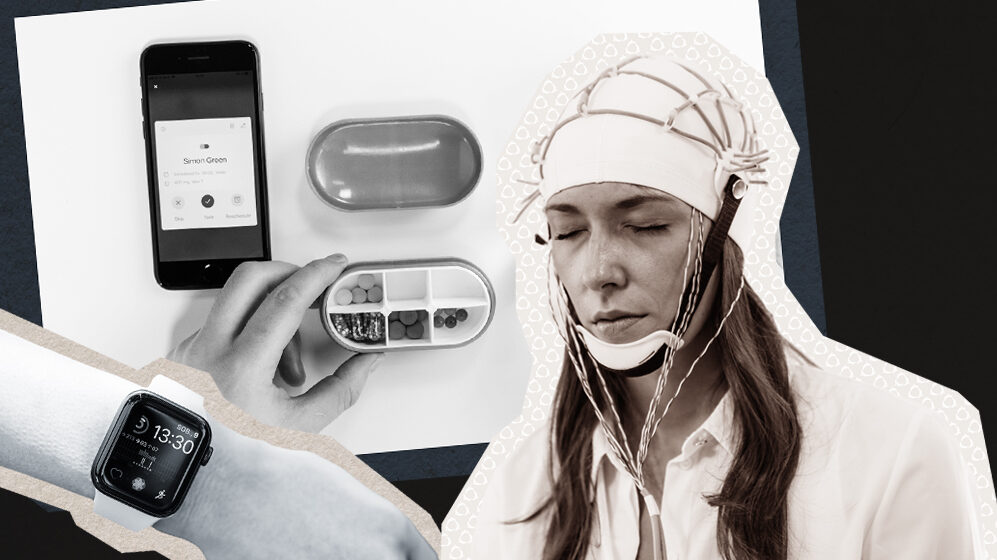Neural Engineers are shaping the future.
Changing the world is indeed a job for visionaries, but the idea of the lone wolf disrupter is incomplete. An age of advancement in biomedicine, telehealth, and computer-brain interface is being made possible by a team of engineers, working in tandem with scientists, technologists and investors. Engineers who enter the field will be met with both challenge and opportunity.
Neuroscience No Longer Science Fiction
“The idea of a surgeon implanting electrodes deep into your brain or of a computer reading your thoughts may seem like something out of science fiction,” writes Daniel Kitts for TVO. “But such technologies are increasingly part of our everyday reality — and, while they raise moral and ethical questions, they offer hope to many with disabilities and neurological disorders.”1
More immediate and tangible potential applications exist as well. Neuroscience could contribute to treatment for those suffering from debilitating illnesses, such as Parkinson’s, depression and migraines, and could allow operative device communication for those who have lost the ability to move through brain-computer interfaces. Educational and athletic applications are also touted.1
Careers for Neural Engineers
“Before they can eliminate headaches, however, scientists first need to be able to deal with a headache of their own: recording and interacting with entire brain circuits,” writes Matt Windsor for the University of Alabama at Birmingham.2
“We have a really high concentration of neuroscientists in the School of Medicine who study circuits in the brain, but we’re not engineers,” admits Lori McMahon, the director of the school’s Comprehensive Neuroscience Centre. “We’re at the very beginning of understanding how all these brain networks are talking to each other from a computational point of view. These are problems that neuroscientists can’t solve on their own. It will take engineers, mathematicians, physicists and computer scientists.”2
Neuroscience could be described as a mixing of mind and machine, a quest that stirs up feelings of hope, curiosity and ethical concern. At the centre of this is Elon Musk, who’s persona is a mixture of rock star, superhero and supervillain. His Neuralink, which has already implanted a chip into the brain of a pig2, has no less a mission than to help us acquire ‘superhuman cognition’, which may be necessary if we humans are to keep pace with artificial intelligence.3 The futurist recently sent out a tweet searching for help:
“If you’ve solved hard problems with phones / wearables (sealing, signal processing, inductive charging, power mgmt, etc), please consider working at engineering.neuralink.com”4
Among those being sought by the mogul were electrical, mechanical, robotics, and microfabrication engineers. Indeed the future will be created by those who can foster scientific discovery, and those who can create the infrastructure for making it deliverable and practical.
Telehealth and Biotech Advancements
The popularity of telehealth quite naturally received a boost when the pandemic simultaneously motivated the public to be health-conscious and public-building-averse. While a host of apps are designed to foster connection and communication between patient and health professional, it’s more than just chatting and prescription administration.
“The telehealth sector includes a wide range of technological segments under its umbrella,” says Financial Buzz “For example, technologies such as telemedicine, robots, and chatbots are being deployed to help gather information, reassure the population, treat patients, make diagnoses, and even prepare future vaccines.5
Researchers at Missouri S&T, for instance, are hard at work on the creation of an oxygen-sensing patch that could interact with a smartphone.
“This smart bandage could enable remote monitoring for the early detection of illnesses such as pressure ulcers, allowing for immediate treatment or intervention,” says Nanowerk News.6
Among disciplines of importance to the telemedicine industry are data scientists, robotics engineers, machine learning and AI specialists, mechatronic engineers, blockchain developers, as well as VR and AR specialists.7
Skills and Aptitudes of World-Changing Engineers
Jobs in neuroscience, biotech, and telehealth often offer great compensation, but they aren’t for everybody. Along with a high degree of technical knowledge, engineers on the cutting edge of innovation should have an affinity for continuous learning, a degree of flexibility, and a desire to change the world.
“I love neuroscience because it is the perfect intersection of philosophical mystery, awesome innovation, and tangible advancements for peoples’ lives,” says Casey Grage, who went from college freshman to CEO of startup Hubly Surgical in a few short years.8
Non-Stop Innovation in Neuroscience and Biomedicine
Being on the frontline of change means constantly recalibrating. The most successful engineers in these evolving industries will have knowledge at the intersection of technology and scientific fundamentals, paired with a keen sense of where their industry is moving.
“The brain is the most complex organ in the body and arguably the most complex object on earth,” says neuroscientist D’Angela Pritchett-Rowe. “It’s going to take many different creative minds to begin to unravel its mysteries.”9
“There’s a realization that, if we’re going to understand how the healthy brain works and how these circuits get disrupted in all kinds of illnesses, it takes people from different disciplines,” says McMahon. “We’re bringing together two groups of experts to do new research that we haven’t done before. It’s a very exciting time.”2




